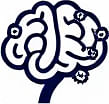Exploring Value Chain Analysis as a Mental Model
 by Marlene Keeling
by Marlene Keeling
Value Chain Analysis offers a clear framework for examining business operations and gaining competitive edges. By breaking down activities into primary and support functions, it helps individuals and organizations improve efficiency and decision-making. This mental model enhances strategic thinking in various fields.

Value Chain Analysis serves as an essential mental model for breaking down organizational processes. It examines how activities contribute to creating value and achieving better outcomes.
In business, this model identifies key functions that drive success. For instance, primary activities like inbound logistics handle the receipt and storage of materials. These steps ensure smooth operations from start to finish.
Secondary functions, often called support activities, bolster the main processes. Human resource management, for example, focuses on recruiting and developing talent. This aspect supports overall performance by maintaining a skilled workforce.
Applying this model can reveal inefficiencies. A company might analyze its operations to find areas where costs exceed benefits. By doing so, leaders can make targeted improvements and boost profitability.
How It Works in Practice
To use Value Chain Analysis effectively, start with mapping out your activities. Begin by listing the core processes involved in delivering a product or service. This step provides a visual overview of the flow.
Next, evaluate each activity's role. Ask questions about resource use and output quality. For example, in manufacturing, production might involve assembly lines that transform raw materials into finished goods.
Support elements, such as technology development, play a crucial role here. They provide the tools needed for innovation and efficiency. A firm investing in new software could streamline data handling and reduce errors.
In psychology, this model parallels cognitive processes. Individuals can apply it to personal growth by viewing daily routines as interconnected steps. For instance, skill-building might involve learning and practice phases that lead to expertise.
Benefits for Professionals
For those in business strategies, Value Chain Analysis offers practical insights. It helps in spotting opportunities for differentiation. Companies can focus on unique strengths, like superior customer service, to stand out in the market.
This approach also aids in cognitive development. By systematically analyzing tasks, people enhance their problem-solving skills. Regular use of the model trains the mind to think more strategically.
Consider a small business owner reviewing their operations. They might discover that marketing efforts are not aligned with production capabilities. Adjusting this could lead to better resource allocation and growth.
In team settings, the model promotes collaboration. Members can discuss how their roles interconnect, fostering a cohesive environment. This shared perspective reduces conflicts and improves outcomes.
Real-World Examples
Many organizations have adopted this framework successfully. A retail company, for example, might use it to optimize supply chains. By examining distribution methods, they can cut delivery times and enhance customer satisfaction.
In education, teachers apply similar principles to curriculum design. They break down lessons into sequential parts, ensuring each builds on the previous one. This method helps students grasp complex concepts more easily.
For lifelong learners, the model encourages self-reflection. Tracking personal projects as a chain of activities can highlight strengths and weaknesses. Someone pursuing a new hobby might analyze their progress to refine techniques.
Potential Challenges and Solutions
While useful, implementing Value Chain Analysis has hurdles. Data collection can be time-consuming, requiring detailed records of operations. To address this, use simple tools like spreadsheets for tracking.
Another issue is overlooking external factors. Economic changes might affect material costs, so it's important to include market analysis in the process.
Solutions involve regular updates to the analysis. By reviewing the chain periodically, individuals can adapt to new conditions. This flexibility keeps the model relevant over time.
In summary, Value Chain Analysis provides a structured way to view processes and improve results. Its application extends beyond business into personal and cognitive areas.
By integrating this mental model into daily life, professionals and learners can achieve greater clarity and efficiency. Whether in strategy sessions or individual planning, it offers a reliable path to enhanced performance.
